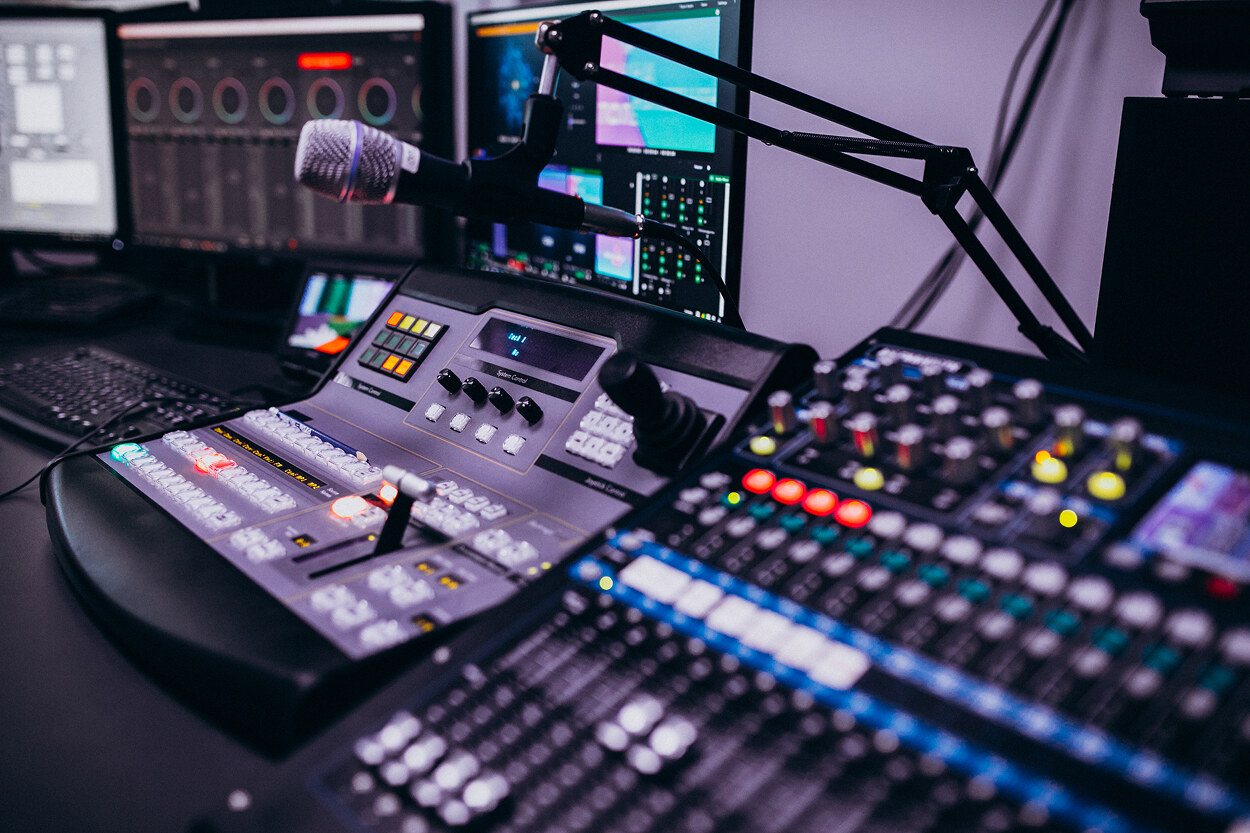AI in Video Streaming: How Neural Networks Are Transforming ProAV and Broadcast

Artificial intelligence is no longer a futuristic concept in the broadcasting and professional audiovisual (ProAV) industry. From real-time video enhancement to autonomous content analysis, AI has embedded itself into every stage of the streaming pipeline. As audiences demand higher video quality, lower latency, and personalized viewing experiences, neural networks are becoming a core asset in competitive ProAV and broadcast solutions.
In this article, we explore the practical applications of AI in video streaming, including AV1 encoding acceleration, automatic color correction, denoising, super-resolution, and edge-based video analytics. We also delve into hardware choices like FPGAs and GPUs that make these applications feasible in real-world AV systems.
Why AI Is the New Backbone of Video Streaming
The media and entertainment industry is shifting from traditional rule-based algorithms to machine learning and neural networks for one major reason: adaptability. Conventional systems struggle with the variability of lighting, noise, and network conditions, while AI models can learn, adapt, and improve with more data.
Key Drivers Behind AI Adoption in ProAV and Broadcast
- Higher Resolutions: 4K, 8K, and beyond require more efficient encoding, transmission, and processing.
- Edge Deployment: Increasing use of edge computing to reduce latency and ensure privacy in on-premise video workflows.
- Content Personalization: From auto-cropping to sentiment detection, AI enables tailored viewing experiences.
- Operational Automation: AI reduces the need for manual intervention in editing, switching, and quality monitoring.
AI-Enhanced Video Encoding: The AV1 Revolution
The AV1 codec is designed for efficiency, offering 30% better compression than H.265/HEVC without royalties. However, its computational complexity is a challenge. Here, AI plays a crucial role.
How AI Accelerates AV1 Encoding
- Predict Motion Vectors: Improve inter-frame compression by estimating object movement.
- Select Optimal Prediction Modes: Enhance intra-frame compression with neural classifiers.
- Accelerate Rate-Distortion Optimization (RDO): Use learned models to speed up search across encoding parameters.
Q: How does AV1 with AI compare to traditional codecs like H.264 in live workflows?
A: AV1 encoding enhanced by AI delivers superior quality at lower bitrates, but real-time performance requires dedicated accelerators like FPGAs or specialized GPUs. For live streaming, it reduces CDN costs and improves video quality, making it ideal for ProAV applications like conferencing and remote production.
Noise Suppression and Super-Resolution with Deep Learning
Video captured in low-light or high-movement environments typically suffers from noise and blur. Traditional filters are rigid; neural networks adapt better.
Real-Time Denoising
Using convolutional neural networks (CNNs), AV systems can remove temporal and spatial noise in real time. These models can be deployed on edge devices using TensorRT or OpenVINO frameworks.
AI-Powered Super-Resolution
Neural models like ESRGAN upscale low-resolution footage with sharper edges and textures, ideal for legacy content repurposing or bandwidth-constrained streams.
Q: Can AI-based denoising replace optical upgrades in low-light cameras?
A: To a certain extent, yes. While AI denoising can’t capture more photons, it dramatically improves visibility and clarity in noisy frames, reducing reliance on expensive optics.
Automatic Color Correction and Scene Recognition
AI is transforming post-processing by automating what used to be manual color grading and tagging tasks.
- Color Matching: CNNs match the color tones of different cameras to create consistent multi-cam setups.
- Scene Detection: Recurrent neural networks (RNNs) segment streams by scene changes or content types.
- Object Recognition: Enables contextual editing, ad placement, and metadata generation.
Q: How does AI support multi-camera workflows in broadcast studios?
A: AI algorithms harmonize visual output across different cameras through real-time color correction and lens distortion mapping, streamlining post-production and reducing live switching errors.
AI-Based Video Analytics at the Edge
Moving video analysis to edge devices reduces latency and offloads central servers. It also supports bandwidth savings by only transmitting relevant metadata.
Typical Edge-Based AI Use Cases
- Face and Object Detection: For access control, targeted advertising, or viewer statistics.
- Gesture Recognition: Enables touchless interfaces in public displays or control panels.
- Event Detection: AI models detect abnormal behaviors, such as falls or equipment failures.
Q: Why deploy video analytics at the edge instead of the cloud?
A: Edge AI improves response times, ensures data privacy, and operates even when offline. In broadcast vans or temporary AV setups, this is critical.

Hardware Platforms: FPGAs, GPUs, and Hybrid Architectures
Running AI models in AV systems demands careful hardware consideration. Latency, power consumption, and footprint matter.
Platform Comparisons
| Platform | Strengths | Weaknesses |
| FPGAs | Deterministic latency, reconfigurability, low power | Complex development, limited model size |
| GPUs | High throughput, easy AI deployment | Higher power draw, less deterministic |
| Hybrid (x86 + ARM + FPGA) | Balanced performance, modular | Cost, complexity |
Promwad engineers often use FPGAs with soft processors and CNN accelerators to balance flexibility and performance in AI video projects.
Q: Is it feasible to run AI inference on a single AV device?
A: Yes. With SoCs like Xilinx Zynq Ultrascale+ or NVIDIA Jetson, AV devices can run AI models locally. This supports real-time enhancements, analytics, and control without central servers.
Real-World Applications: From Studios to Smart Displays
- Smart TVs: Use AI for upscaling, voice control, and content recommendations.
- Broadcast Studios: Automate camera switching, video tagging, and compliance checks.
- Digital Signage: Trigger content based on viewer demographics using on-board vision models.
- Live Events: Use AI to track performers, balance audio/video feeds, and trigger effects.
Key Takeaways and Future Outlook
- Enhanced video quality through intelligent compression, denoising, and upscaling
- Lower operational costs via automation
- Real-time analytics and interaction enabled by edge AI
The future holds even more advanced integrations:
- Transformer models for understanding full scenes and narratives
- Multimodal AI that synchronizes video, audio, and subtitles
- Federated learning to personalize experiences without exposing raw data
Let’s shape the future of video streaming together. Whether you’re building the next-gen camera, encoder, or streaming platform, Promwad helps bring your AI-powered ProAV solution to life.
Need help with edge AI integration or low-latency streaming? Get in touch with our broadcast engineering team at promwad.com.
Our Case Studies








